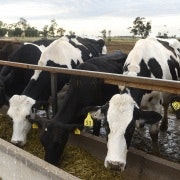ASX's daunting sell
Less than 24 hours after unveiling the proposed merger of the ASX and Singapore Exchange, Rob Elstone and his SGX counterpart, Magnus Bocker have been reminded that the biggest obstacle to the deal lies in front of them.
Already Joe Hockey, Bob Brown and Bob Katter have expressed reservations about the concept of the ASX being acquired by SGX. Given that the deal needs parliamentary and ministerial consents to remove ASX's shareholding limits, the complicated politics of the current parliament represent a significant threat to the proposal.
The market's response to the announcement was largely enthusiastic, although the dive in SGX's share price suggests that it has some work to do to convince its own investors of the merits of acquiring ASX.
The exchanges can also reassure regulators that there is no threat to the integrity of their exchanges or any suggestion that they will relinquish sovereignty over the exchanges. Each will remain separately regulated, although sensibly there would be some effort in future to try to harmonise the regimes.
With the caveat that changing share prices and currency fluctuations could affect investor perceptions, that leaves the question of the national interest as the key issue for the exchanges to address. Given that SGX is acquiring ASX and would dominate its governance, it is the Australian Government and the balance of parliament that they will need to reassure.
Both major political parties have long held the ambition of leveraging the unique Australian savings pool – $1.2 trillion of managed funds – to create a regional financial centre.
Unhappily, that hasn't happened – Australia and New Zealand represented about five per cent of the world's trading volumes a decade ago but today their combined share would be less than half that level.
With the ASX facing the imminent prospect of competition for volume and potentially liquidity from the like of Chi-X which have decimated the traditional exchange dominance elsewhere, ASX needs to be proactive to remain relevant in the context of rapid consolidation of the world's exchanges.
A critical question is, if the ASX is to help connect the Australian savings pool and the fund managers, investors and companies more deeply with the region, whether SGX is the right partner and whether being acquired by SGX is the right transaction structure.
As it happens the big premium at which SGX has been trading made an ASX acquisition of SGX or a more equal relationship impossible, while the cultural and legal compatibility of the two jurisdictions and the absence of better alternatives within the region under-pins the logic of the deal. There will be those, however, who would have preferred a tie-up with an exchange, like Toronto or London, where there are existing two-way capital flows.
Merging the exchanges won't immediately or necessarily provide any significant increases in liquidity or access to new sources of capital for either jurisdiction. Liquidity always tends to pool within the domestic market. It will also be a challenge to convince Australian companies to list in Singapore, and vice versa, or Australian investors to invest in Singapore, and vice versa.
The two exchanges, however, are talking about the potential for a "passport" system which would facilitate access to each other's market without dual listings.
If there is to be a regional platform for securities trading it needs to be a multi-currency platform, with multi-currency clearing and settlement capabilities – as Rob Elstone says, you can't regionalise the Australian funds management sector unless Australian funds are prepared to invest in non-Australian dollar assets.
Even if there were no short term gains in liquidity or efficiency beyond the relatively modest synergies the merger would enable, the combination would create the dominant derivatives platform in the region, which could enable them to attract new and different sources of liquidity by creating new regional index-related products.
The exchange talk about the merger as creating a road along which regional capital flows could travel and the task ahead as being convincing companies and investors to use the road. But does this merger produce a CityLink or a River City Motorway? It isn't possible to come to a definitive conclusion before it's built.
So, there are at least two major components to the national interest argument – the fate of the ASX without the deal and the benefits, if any, the merger would create for Australian companies and investors.
Given the complexity of modern global capital flows and the ways they are intermediated Elstone and Bocker face a daunting but not impossible task trying to convince the politicians that allowing SGX (whose largest shareholder is effectively the Singapore Government) to acquire ASX is a positive for the Australian national interest.
















